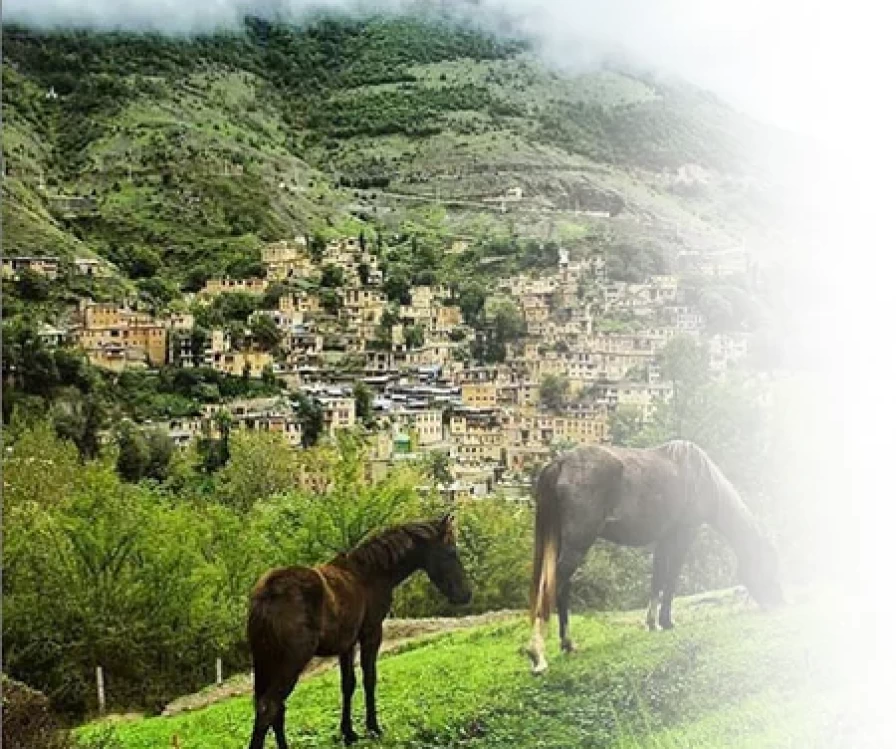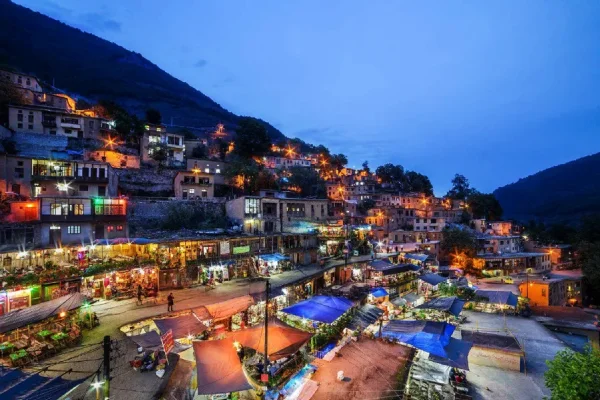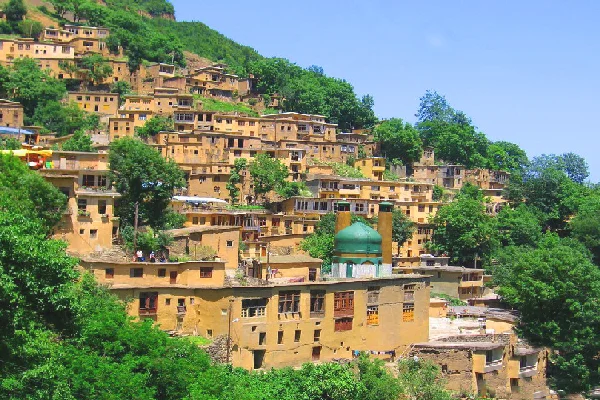
Masooleh : A Unique Mountain Town





Masuleh
Masuleh is a town located 60 kilometers from Rasht and 26 kilometers from Fuman, situated in the Sardar Jangal district of Fuman County. The town sits at an elevation of 1,050 meters above sea level and covers an area of approximately 100 hectares. The municipality of Masuleh was established in 1207 AH, corresponding to 1929 AD, making it an ancient yet relatively modern town. In 1975, it was added to the list of national heritage sites by the Cultural Heritage and Natural Organization, gaining strategic importance due to the construction of new roads connecting Gilan and Mazandaran provinces. Today, Masuleh has garnered more attention, especially after being included in the UNESCO World Heritage list, which has led to increased protection and preservation efforts. According to the 2016 census, Masuleh has a population of 393, making it one of the ten towns with fewer than 1,000 residents.
Due to the mountainous terrain and limited land availability, the houses in Masuleh are built in a terraced style on the slopes of the mountains. This unique construction means that courtyards do not exist in the traditional sense; instead, the roof of the lower house serves as the courtyard for the upper house, a practice that is widely accepted. Over the centuries, the residents of Masuleh have learned to live together harmoniously, enduring hardships and strengthening their community bonds. The arrangement of these houses resembles a large staircase cascading down the mountainside, reflecting an outward-looking culture. Unlike the introverted Islamic culture, where houses are built in secluded areas, the houses of Masuleh are open on all sides, allowing views both in and out. This characteristic makes Masuleh a unique town, where the intertwining of architecture and the environment creates a harmonious urban garden.
There are two main reasons why the houses in Masuleh are built at higher elevations. First, cold air tends to settle in the valley, creating difficulties for homes located there. Second, the risk of flooding in the valley bottom necessitates building houses on higher ground. Due to the limited land, these houses are constructed in a terraced manner, with the roof of one house serving as the courtyard for the house above it. The upper parts of the mountains are unsuitable for construction due to cold temperatures and strong winds. Therefore, the village has developed on the mid-slope of the mountain and the valley floor, resulting in what is now known as Masuleh, which is open for tourists to explore.
Around the 8th century AH (14th century AD), the original inhabitants of Masuleh, known as Kohneh Masuleh, migrated from a village located 6 kilometers northwest of the current Masuleh to the present site. Masuleh is currently on the tentative list for UNESCO World Heritage status, awaiting official recognition.
As mentioned, the old Masuleh, located 10 kilometers from the current town, has remnants of ancient iron smelting and sponge iron production sites, along with artifacts from the Parthian to Qajar dynasties. These four-stage furnaces for sponge iron production are unique and have not been found elsewhere in Iran.
Masuleh features a distinctive architectural style rarely seen in other parts of Iran. The roof of each house serves as the courtyard for the house above it. The architectural fabric of Masuleh developed during the Zand era, with narrow streets and numerous stairs that prevent motor vehicles from entering. In summary, the architecture of Masuleh can be described as follows: the courtyard of the upper building is considered the roof of the lower building. Buildings are typically two stories high, with very few three-story houses.
Masuleh consists of four main neighborhoods, each directly connected to the town's market. Currently, there are over 350 residential units, which had increased to around 600 units about a century ago. Not long ago, there were 120 commercial units in the market area, along with more than four caravanserais that hosted local and non-local merchants. The presence of two traditional baths, over 33 public baths, and 10 mosques and shrines indicates the economic prosperity of this area, which has unfortunately declined significantly. Today, it only thrives during peak tourist seasons.
The existence of eight caravanserais and a large market in Masuleh suggests that many residents were engaged in trade. The handicrafts of Masuleh, which included metal and woodwork, have nearly disappeared. The current economy of Masuleh is primarily defined by local tourism.
The people of Masuleh are primarily Taleshi and speak the Taleshi language. Taleshi is prevalent in parts of western Gilan, southeastern Ardabil, and southern Azerbaijan, closely related to the Avestan and Tati languages. Taleshi belongs to the Northwestern Iranian languages and the Caspian languages family. The southern dialect of Taleshi is very similar to Tati and is mutually intelligible, although the two languages are fundamentally different. Tats, Taleshi, Mazandaranis, and Gilaks speak languages that often differ from Persian and share similarities with Median, Parthian, and Avestan.
Masuleh has an open and extroverted culture. The people of Masuleh have always welcomed tourists, reflecting their historical culture. One of the most significant events in Masuleh is the observance of Ashura and Muharram, which is celebrated in great detail and attracts thousands of tourists each year. Interestingly, none of the speakers, mourners, or actors in the passion plays receive any payment. Due to Masuleh's inclusion in the UNESCO World Heritage list, no new construction has taken place in the area. Only restoration or repair of buildings and other sites is permitted with the approval of the Cultural Heritage and Tourism Organization. The current population of Masuleh is below 1,000, and due to limited space and job opportunities, many of the town's children have migrated to nearby cities and other countries.
While the original inhabitants of Kohneh Masuleh were predominantly Zoroastrian, most of the current residents have converted to Islam. The presence of mosques, shrines, and Islamic customs in the area indicates the widespread conversion of the people of Masuleh after the arrival of Islam.
Since the 8th century AH, the name Masuleh has remained in the Taleshi language with its original pronunciation "Musalāh." It is believed that Masuleh derives its name from a nearby mountain called "Mah Salar." Initially, the name was expressed in full, but it later evolved into "Masala" and eventually "Masuleh." In Iranian cultural literature, Masuleh is composed of two parts: "Mas," referring to the mountain, and "uleh," meaning high. Thus, Masuleh can be translated as "like a tall mountain." Furthermore, by examining Sanskrit and Pahlavi languages, it can be interpreted as "land of the small moon." Some believe that the people of Masuleh originated from Kurdistan and the city of Mosul, suggesting that the name Masal in Gilan is derived from Masuleh. This group believes that the people of Kurdistan named the town in memory of Mosul.
Masuleh is a living example of an ecological city, representing a perfect balance between nature and human-made artifacts. The town is built on a natural slope, showcasing a unique biodiversity of flora and fauna. The entire town is constructed on the mountainside, creating a harmonious balance among the houses and residents. Notably, the roof of one house serves as the courtyard for another, allowing for peaceful coexistence. This phenomenon is not found elsewhere in Iran.
Visiting Masuleh typically takes place in a single day, as the town is quite small and can become crowded. If you plan to visit, it's best to leave early in the morning, explore the town throughout the day, have lunch at one of Masuleh's restaurants, and then depart in the afternoon for larger cities. Visiting Masuleh in spring and summer offers a delightful experience. Due to the cold and mountainous climate, winter travel is not recommended. If you intend to travel to Masuleh, our colleagues at Sana Persian are ready to assist you and provide necessary recommendations. Just visit Sana Persian , Iran travel agency ,to benefit from essential travel advice before and during your trip. We look forward to welcoming you to Iran, Gilan, and Masuleh in the near future. Here’s to that day!
Contact Us
+989054577261